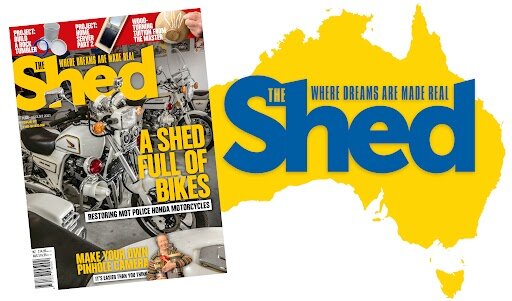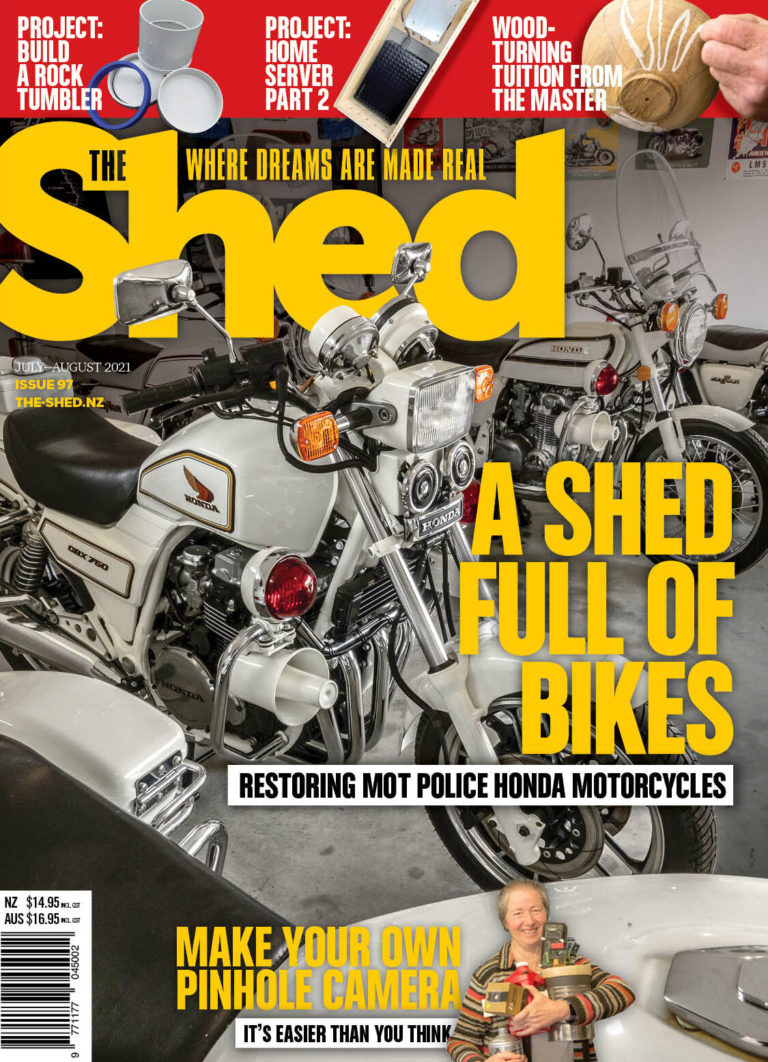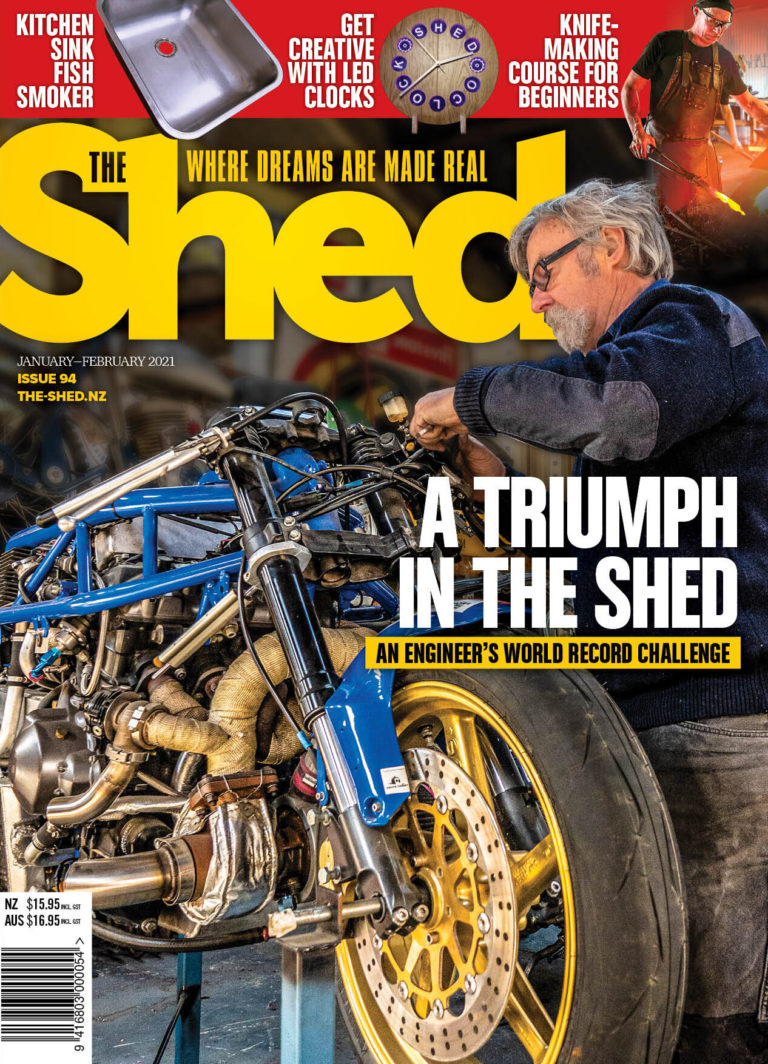A great toy made with only wood and glue
By Stuart Lees
There is something about timber toys that no other material can match.
It may be that they have real substance and mass, or it’s the look of timber vs the plastic-fantastic electronic beeping. Perhaps it’s the deliberate lack of realism, simplifying an object down to its more basic functions so as not to get in the way of imaginative play.
Perhaps it appeals because it is something made rather than bought and it will have a much better chance of lasting the test of time. It will be handed down from small hand to small hand over generations, rather than simply thrown onto the rubbish heap when it is outgrown by the current owner five minutes after its purchase.
I’ve started with the general principle that the whole project should only be wood and glue. It makes you think around the problem of how to join things together and leads to some different design decisions that would be missed if that challenge was not set. The truck chassis is the best platform to build the rest of the vehicle around. It controls the proportions and provides good strength when the toy is dropped or stood on.
With toys, in particular, maintenance and reparability are important to ensure a long life. A broken plastic toy goes in the bin, whereas a well-designed wooden toy can make many trips to the repair shop over generations of play.
If you have the tools available, timber should always be squared and planed flat. DAR (Dressed All Round) timber from a hardware store or timber supplier may look ready to use, but inevitably has a degree of curve, warp, bend or twist. Being able to plane and thickness material means these can be corrected to give stock that is straight and true. Importantly, it means you are not restricted to the dimensions of timber you can buy.
Squaring up stock
A rectangular block with wheel arches cut out. Chamfer front and back and nipping corners away defines bumpers.
Wheel-cutter bit starting
Chassis
The chassis is fundamentally a rectangular block, with the wheel arches cut out of it.
The table saw is used to define the sides and depth of the cut-out, with the waste material removed with a scroll saw, jigsaw or bandsaw (or hammer and chisel if that is your preference).
You can use the table saw to waste more of the timber away if that helps to be able to get the material out. A chamfer front and back and nipping away the front corners define the bumpers of the vehicle.
The axles are first made on the table saw in one long piece, then docked to the lengths required, before being drilled for the dowel.
For the ease of repair, it is better if the dowel is free to spin in this hole, rather than being glued in. If (when) they break, it is much easier to replace the dowel if it doesn’t have to be drilled out.
Wheels
The wheels can be made with a hole saw, but if you are going to make lots of wooden toys, wheel cutting bits are very convenient, and produce a good finish.
Despite looking like router bits, they are definitely only to be used in a drill press. Boring in from the first side, the centre drill bit creates the hole for the dowel, while the tungsten carbide portion shapes the wheel. Once the cutter is making full contact with the timber, a lighter cut produces a smoother finish before turning the workpiece over.
The centre hole then becomes a pilot hole for the remaining cut. If you have sized the timber to roughly the thickness of the wheel, you can continue the cut until the wheel breaks free. In the case of the rear wheels, I wanted a much thicker result, so shaped both sides only, then took the workpiece to the bandsaw to roughly cut the wheels out, then to the lathe to finish.
Once they are round, the tip of a skew chisel then creates some wheel tread.
Wheel-cutting bit defines wheels
Lathe finish for wheels
Test fit
Cabin, tray
The cabin and the tip tray are similar, and simple in construction.
The cabin front is about 1/2 height and has the top edge cut with a 10-degree taper by tilting the table saw blade over.
The rest of the cabin is assembled as square pieces (but not glued as this point) and held together with tight-fitting dominos or dowels, or biscuits. You may need to temporarily screw it together if you cannot create a rigid glueless structure (making sure the screws are not anywhere that will be subsequently cut away).
Subsequent trim can be applied to cover any screw holes. Tilting the table saw blade over to 20 degrees, you cut away the top-front of the cabin. This shapes the doors and sets the front of the roof at exactly the same angle. Disassembling the cabin then allows the door windows to be cut out, matching the angle of the front. The cabin can then be assembled, glued, and clamped.
Cabin assembled as square pieces…
…held together with fitting dominos, dowels or biscuits
Engine
The engine block is even simpler, being a rectangular block, with the top three edges chamfered away. The engine block and cabin can then be glued to the chassis. The tip tray sides are cut, then a long length cut the required width for the base. From this, an oversized front is cut. The top portion of the front is sliced off at a 10-degree angle, then this off-cut is spun around and reattached, so the front lip end up at a 20-degree angle, matching the angle on the front of the cabin. The rear gate is cut from the same piece, then slightly reduced in width so it can swing freely. The bottom edge is chamfered to a 10-degree angle. An oversized hole is drilled through the top edge of the rear gate − again it is easier to refit the dowel if it breaks, and the gate is able to swing freely on the dowel axle.
The tip tray is then dominoed/dowelled or biscuited together and glued. It is attached to the chassis in a similar way to the wheels.
A wooden wheel is cut in half and glued to the underside of the tip tray to take the tray axle (after drilling a new hole). A piece of the axle created earlier is glued behind the chassis for the front of the tray to rest on, keeping it level.
Cabin top sees 10 degree taper from tilted tablesaw
Progress
Finish
You can certainly stop here, especially if you are considering painting the truck to finish.
If going for a more natural finish then the project will really lift with some contrasting timber features added. Some timber “pinstriping”, a front grille, some support member details around the tray.
For this project, I used Tasmanian Oak as the primary timber, with Queen Ebony for the details. If I was going for a real black look to the ebony, the pieces could have been suspended above (not in) an ammonia bath overnight.
Another feature timber I like is Purpleheart. This takes on deep purple hues after being cut when left in the sun. As a further refinement, you could rout slots to embed the contrasting timber in and sand it flush. In this case, though, I was going for a tactile result as well as visual detail.
With the aid of a pyrography pen, additional details were added, such as wheel nuts, the truck logo, and a texturising of the wheels, both around the treads and over the surface as well, which was then lightly sanded. This gave the wheels an “as used” look—it is a “working” vehicle after all.
There are myriad finishes that can be used: paints, varnishes, stains, waxes, oils. What you choose is completely up to you and the intended purpose for the toy.
As a general principle, the finish should be food-safe; the rest is up to you. I like to choose a natural finish, such as a wood oil or wax, one that complements the timber, allowing its natural character to shine, rather than trying to disguise it (like a paint) or make it look like something it is not (such as a stain). Again this influences design and material choices.
Door windows cut out
Clamp cabin for gluing
Finishing touch, naming your truck
Completed truck
Oil
For this truck, I chose Danish oil—a combination of tung oil, linseed oil, and mineral spirits.
It is food-safe when dry, and soaks deep into the timbers, protecting them while giving them a warm finish, enhancing the timber’s natural beauty. It produces a matt finish if applied over a lightly sanded surface, but can be bought to a glowing satin finish if more preparation is done: fine sanding, then buffing after the oil is applied.
The plans are easily scaled and modified. By leaving off the tray and shortening the chassis, you can make it the cab for a B Double, or a tow truck, a car carrier, a flatbed, etc.
Like making any wooden toy, it is as enjoyable making it as it is imagining it being played with when finished. (Even if the playing is you driving the truck around, on your desk at work).
Completed truck with an oiled finish



